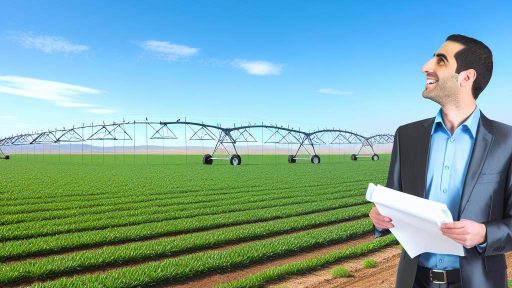Understanding Agroforestry
Definition of Agroforestry
Agroforestry combines agriculture and forestry practices.
This integration enhances biodiversity on agricultural land.
It creates more sustainable ecosystems.
The system utilizes trees alongside crops and livestock.
Principles of Soil Health in Agroforestry
Ssoil health is vital for productive farming.
Agroforestry promotes various soil conservation techniques.
For example, trees can reduce soil erosion.
They also help improve soil structure and fertility.
Benefits of Agroforestry for Soil Health
Agroforestry enhances nutrient cycling in the soil.
It increases organic matter through leaf litter and root systems.
This organic matter boosts microbial activity.
Additionally, it helps retain moisture in the soil.
Examples of Agroforestry Techniques
Alley cropping is one effective agroforestry technique.
This method involves planting crops in rows between trees.
Silvopasture combines trees, crops, and livestock in one system.
Transform Your Agribusiness
Unlock your farm's potential with expert advice tailored to your needs. Get actionable steps that drive real results.
Get StartedWindbreaks reduce wind erosion and protect crops.
All these techniques contribute positively to soil health.
Types of Agroforestry Techniques
Alley Cropping
Alley cropping involves planting rows of trees alongside crops.
This technique creates a microclimate that benefits crops.
Additionally, it helps improve nutrient cycling in the soil.
Farmers benefit from increased biodiversity through this approach.
The trees provide shade, which can reduce water evaporation.
Moreover, their roots stabilize the soil and reduce erosion.
Finally, alley cropping can enhance wildlife habitats on farms.
Silvopasture
Silvopasture combines trees, pasture, and livestock on the same land.
This technique maximizes land use while improving soil health.
It provides shade for livestock, enhancing their comfort and productivity.
The trees contribute organic matter to the soil through leaf litter.
Consequently, this increases soil fertility and microbial activity.
Furthermore, silvopasture reduces the risk of soil erosion.
Farmers can also diversify their income through timber and livestock sales.
Forest Farming
Forest farming involves cultivating understory crops beneath a forest canopy.
This method makes use of shade-tolerant crops, enhancing biodiversity.
It can include medicinal plants, mushrooms, and fruits.
Additionally, forest farming can enhance soil health by adding organic matter.
Moreover, it protects soil from direct sunlight and heavy rain.
Farmers who adopt this technique may benefit from higher yields.
Finally, forest farming supports wildlife and promotes ecosystem services.
Benefits of Agroforestry for Soil Health
Nutrient Cycling
Agroforestry significantly enhances nutrient cycling in agricultural systems.
Showcase Your Farming Business
Publish your professional farming services profile on our blog for a one-time fee of $200 and reach a dedicated audience of farmers and agribusiness owners.
Publish Your ProfileDiverse plant species contribute to improved nutrient availability in the soil.
Root systems of trees reach deeper soil layers, accessing nutrients beyond traditional crops.
Fallen leaves and organic matter enrich the soil, fostering microbial activity.
This process results in a more balanced nutrient profile for crops.
Moreover, nutrient cycling reduces the need for chemical fertilizers.
Farmers experience reduced costs and improved sustainability with this practice.
Erosion Control
Erosion control is another critical benefit of agroforestry.
Tree roots stabilize soil and prevent runoff during heavy rains.
This natural barrier diminishes soil loss and protects the topsoil layer.
Additionally, agroforestry systems create barriers that slow wind erosion.
Retaining soil structure helps maintain moisture and nutrient levels.
The reduction in erosion leads to healthier soils over time.
Consequently, farmers notice better crop resilience and yields.
Gain More Insights: Mitigating Climate Risks: Economic Approaches for Farmers
Integrating Cover Crops in Agroforestry Systems
Benefits of Cover Crops
Cover crops significantly enhance soil health in agroforestry systems.
They improve soil structure and increase organic matter.
Furthermore, they help in reducing erosion and nutrient runoff.
Cover crops also promote biodiversity within the soil ecosystem.
Choosing the Right Cover Crops
Selecting suitable cover crops is vital for effective integration.
Different crops provide varied benefits for soil health.
Legumes, for example, fix nitrogen and enhance soil fertility.
Grasses, on the other hand, improve soil structure and reduce compaction.
Timing of Planting and Termination
Proper timing is essential for maximizing cover crop benefits.
Plant cover crops in the fall after the main crop harvest.
This approach allows the crops to establish before winter.
Terminate them just before planting the next cash crop.
Management Practices
Effective management practices support the success of cover crops.
Regularly monitor cover crop growth and health.
Utilize crop rotation to enhance soil biodiversity.
Consider using intercropping to maximize land use efficiency.
Assessing Soil Health Improvements
Monitoring soil health improvements is crucial for feedback.
Conduct soil tests to evaluate organic matter and nutrient levels.
Additionally, observe changes in soil structure and life.
Utilize this data to refine cover crop strategies over time.
Delve into the Subject: Financial Benefits of Sustainable and Climate-Friendly Farms
Use of Organic Mulching in Agroforestry
Enhancing Soil Moisture
Organic mulching significantly improves soil moisture retention.
This technique reduces water evaporation from the soil surface.
Moreover, it allows for prolonged water availability during dry periods.
Additionally, mulches slow down runoff, promoting water infiltration.
Overall, this leads to healthier crops and higher yields.
Showcase Your Farming Business
Publish your professional farming services profile on our blog for a one-time fee of $200 and reach a dedicated audience of farmers and agribusiness owners.
Publish Your ProfileImproving Soil Structure
Organic mulching enhances the soil’s physical structure.
As the mulches decompose, they enrich the soil with organic matter.
In turn, this boosts the soil’s ability to hold moisture and nutrients.
Furthermore, healthy soil supports a diverse ecosystem of beneficial organisms.
This diversity aids in nutrient cycling and soil aeration.
Reducing Weed Competition
Using organic mulches effectively suppresses weed growth.
The dense layer of mulch blocks sunlight from reaching weed seeds.
Consequently, this reduces the need for chemical herbicides.
Farmers can focus on cultivating healthy plants instead.
This practice contributes to sustainable agricultural methods.
Enhancing Soil Fertility
Mulches contribute essential nutrients back to the soil as they break down.
This gradual release of nutrients supports plant growth over time.
In addition, organic mulches can improve microbial activity in the soil.
Microbes are crucial for breaking down organic matter and recycling nutrients.
As a result, plants benefit from improved nutrient availability.
Discover More: Farmers’ Solutions to Climate Change Impacts

Role of Nitrogen-Fixing Trees in Agroforestry: Improving Soil Fertility
Introduction to Nitrogen-Fixing Trees
Nitrogen-fixing trees play a crucial role in enhancing soil fertility.
These trees convert atmospheric nitrogen into forms usable by plants.
They support other crops by improving nutrient availability in the soil.
Benefits of Nitrogen-Fixing Trees
Nitrogen-fixing trees provide multiple benefits for agricultural land.
- They increase nitrogen levels in the soil.
- These trees also reduce the need for synthetic fertilizers.
- They promote healthier crop yields through improved soil structure.
Common Types of Nitrogen-Fixing Trees
Various species of nitrogen-fixing trees are suitable for agroforestry.
Some common types include Leucaena, Acacia, and Albizia.
Each species has unique advantages based on climate and soil conditions.
Implementation in Agroforestry Systems
Integrating nitrogen-fixing trees into agroforestry systems is effective.
Farmers can plant these trees alongside traditional crops.
This practice encourages biodiversity and optimizes land use.
Challenges and Considerations
While beneficial, there are challenges in using nitrogen-fixing trees.
Some species may outcompete local vegetation.
Farmers must select appropriate species for their specific environments.
Explore Further: Managing Excess Water: Tools and Techniques for Farmers
Case Studies: Successful Agroforestry Practices and Their Impact on Soil Health
Integrated Crop and Livestock Systems
In Brazil, farmers have adopted integrated crop and livestock systems.
This method mixes crops like soybeans with livestock on the same land.
Such diversification improves soil organic matter significantly.
Moreover, it enhances nutrient cycling and boosts soil fertility.
Silvopasture Practices
In the Midwest United States, farmers implement silvopasture techniques.
This practice combines trees, pasture, and livestock in a seamless system.
Research shows that silvopasture increases soil moisture retention.
Furthermore, it reduces erosion and improves soil structure.
Alley Cropping Approaches
In Africa, alley cropping is widely embraced by smallholder farmers.
This method involves planting crops between rows of trees or shrubs.
Showcase Your Farming Business
Publish your professional farming services profile on our blog for a one-time fee of $200 and reach a dedicated audience of farmers and agribusiness owners.
Publish Your ProfileAlley cropping enhances soil health by increasing biodiversity.
Additionally, it creates shade for crops in hot climates.
Agroforestry’s Role in Soil Erosion Control
Successful agroforestry practices also mitigate soil erosion.
For example, in Haiti, farmers have preserved hillside forests.
This strategy prevents soil loss and maintains productivity.
Consequently, agroforestry contributes to sustainable land management.
Utilizing Native Species for Soil Improvement
Farmers in Australia are using native trees to improve soil quality.
These species deep in roots access water and nutrients.
As a result, they help restore degraded lands and improve soil health.
Their introduction leads to healthier ecosystems overall.
Impact on Economic Viability
Beyond soil health, agroforestry practices boost farmer incomes.
They create new markets for timber and non-timber forest products.
This financial benefit encourages adoption among more farmers.
Moreover, improving soil health ensures long-term productivity.
Challenges and Solutions in Implementing Agroforestry Techniques for Soil Improvement
Understanding the Barriers
Implementing agroforestry techniques often presents numerous challenges.
Farmers may lack sufficient knowledge about agroforestry practices.
Additionally, initial setup costs can deter many from adopting these methods.
Moreover, climate variability complicates successful implementation.
Farmers often face difficulties in accessing suitable plant species.
Educating Farmers
Education plays a critical role in overcoming barriers.
Providing training programs enhances understanding of agroforestry benefits.
Workshops can help share best practices among farmers.
Moreover, outreach initiatives can increase awareness of success stories.
Addressing Financial Concerns
Financial assistance is vital for farmers interested in agroforestry.
Government grants and subsidies can alleviate initial costs.
Additionally, microloans can support farmers during the transition phase.
Investment in community-based financial models creates sustainable funding sources.
Promoting Resilience Through Research
Research institutions must focus on agroforestry’s adaptability to various climates.
Conducting trials with diverse plant species can yield vital insights.
Moreover, sharing data helps farmers make informed decisions.
Research can also identify effective pest management strategies.
Enhancing Community Support
Community involvement is essential for successful agroforestry practices.
Establishing local support groups encourages knowledge sharing.
Communities can collectively address common challenges and share resources.
Collaboration among farmers strengthens the agroforestry network.
Additional Resources
Novel approaches and practices to sustainable agriculture …
Soil Health, Soil Amendments, and Carbon Farming | USDA Climate …




